Ultrafiltration and Injection of Islet Regenerative Stimuli Secreted by Pancreatic Mesenchymal Stromal Cells
- PMID: 33403929
- PMCID: PMC10331161
- DOI: 10.1089/scd.2020.0206
Ultrafiltration and Injection of Islet Regenerative Stimuli Secreted by Pancreatic Mesenchymal Stromal Cells
Abstract
The secretome of mesenchymal stromal cells (MSCs) is enriched for biotherapeutic effectors contained within and independent of extracellular vesicles (EVs) that may support tissue regeneration as an injectable agent. We have demonstrated that the intrapancreatic injection of concentrated conditioned media (CM) produced by bone marrow MSC supports islet regeneration and restored glycemic control in hyperglycemic mice, ultimately providing a platform to elucidate components of the MSC secretome. Herein, we extend these findings using human pancreas-derived MSC (Panc-MSC) as "biofactories" to enrich for tissue regenerative stimuli housed within distinct compartments of the secretome. Specifically, we utilized 100 kDa ultrafiltration as a simple method to debulk protein mass and to enrich for EVs while concentrating the MSC secretome into an injectable volume for preclinical assessments in murine models of blood vessel and islet regeneration. EV enrichment (EV+) was validated using nanoscale flow cytometry and atomic force microscopy, in addition to the detection of classical EV markers CD9, CD81, and CD63 using label-free mass spectrometry. EV+ CM was predominately enriched with mediators of wound healing and epithelial-to-mesenchymal transition that supported functional regeneration in mesenchymal and nonmesenchymal tissues. For example, EV+ CM supported human microvascular endothelial cell tubule formation in vitro and enhanced the recovery of blood perfusion following intramuscular injection in nonobese diabetic/severe combined immunodeficiency mice with unilateral hind limb ischemia. Furthermore, EV+ CM increased islet number and β cell mass, elevated circulating insulin, and improved glycemic control following intrapancreatic injection in streptozotocin-treated mice. Collectively, this study provides foundational evidence that Panc-MSC, readily propagated from the subculture of human islets, may be utilized for regenerative medicine applications.
Keywords: extracellular vesicles; mesenchymal stromal cells; pancreas; proteomics; regenerative medicine; transplantation.
Conflict of interest statement
No competing financial interests exist.
Figures
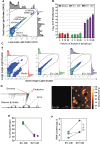
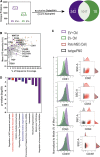
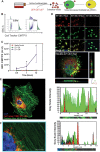
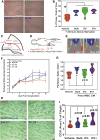
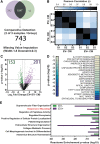
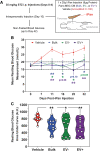
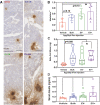
Similar articles
-
Culture of Hoffa fat pad mesenchymal stem/stromal cells on microcarrier suspension in vertical wheel bioreactor for extracellular vesicle production.Stem Cell Res Ther. 2024 Mar 5;15(1):61. doi: 10.1186/s13287-024-03681-9. Stem Cell Res Ther. 2024. PMID: 38439108 Free PMC article.
-
Isolation and characterization of bone mesenchymal cell small extracellular vesicles using a novel mouse model.J Bone Miner Res. 2024 Oct 29;39(11):1633-1643. doi: 10.1093/jbmr/zjae135. J Bone Miner Res. 2024. PMID: 39173022
-
Human Infrapatellar Fat Pad Mesenchymal Stem Cell-derived Extracellular Vesicles Purified by Anion Exchange Chromatography Suppress Osteoarthritis Progression in a Mouse Model.Clin Orthop Relat Res. 2024 Jul 1;482(7):1246-1262. doi: 10.1097/CORR.0000000000003067. Epub 2024 Apr 19. Clin Orthop Relat Res. 2024. PMID: 38662932 Free PMC article.
-
Versatility of mesenchymal stem cell-derived extracellular vesicles in tissue repair and regenerative applications.Biochimie. 2023 Apr;207:33-48. doi: 10.1016/j.biochi.2022.11.011. Epub 2022 Nov 23. Biochimie. 2023. PMID: 36427681 Review.
-
A systematic review of mesenchymal stem cell secretome: Functional annotations, gene clusters and proteomics analyses for bone formation.Bone. 2025 Jan;190:117269. doi: 10.1016/j.bone.2024.117269. Epub 2024 Oct 4. Bone. 2025. PMID: 39368726
Cited by
-
Mesenchymal Stem Cell-Derived Extracellular Vesicles: A Potential Therapy for Diabetes Mellitus and Diabetic Complications.Pharmaceutics. 2022 Oct 17;14(10):2208. doi: 10.3390/pharmaceutics14102208. Pharmaceutics. 2022. PMID: 36297643 Free PMC article. Review.
-
Extracellular vesicles in β cell biology: Role of lipids in vesicle biogenesis, cargo, and intercellular signaling.Mol Metab. 2022 Sep;63:101545. doi: 10.1016/j.molmet.2022.101545. Epub 2022 Jul 8. Mol Metab. 2022. PMID: 35817393 Free PMC article. Review.
-
Cardiac progenitor cell-derived extracellular vesicles promote angiogenesis through both associated- and co-isolated proteins.Commun Biol. 2023 Aug 1;6(1):800. doi: 10.1038/s42003-023-05165-7. Commun Biol. 2023. PMID: 37528162 Free PMC article.
-
Characterization of extracellular vesicles derived from mesenchymal stromal cells by surface-enhanced Raman spectroscopy.Anal Bioanal Chem. 2021 Aug;413(20):5013-5024. doi: 10.1007/s00216-021-03464-8. Epub 2021 Jun 17. Anal Bioanal Chem. 2021. PMID: 34137912
-
Interplay of hypoxia, immune dysregulation, and metabolic stress in pathophysiology of type 1 diabetes.Front Immunol. 2025 Jun 4;16:1599321. doi: 10.3389/fimmu.2025.1599321. eCollection 2025. Front Immunol. 2025. PMID: 40534855 Free PMC article. Review.
References
-
- Caplan AI. (2016). MSCs: the sentinel and safe-guards of injury. J Cell Physiol 231:1413–1416. - PubMed
-
- Squillaro T, Peluso G and Galderisi U. (2016). Clinical trials with mesenchymal stem cells: an update. Cell Transplant 25:829–848. - PubMed
-
- Bell GI, Broughton HC, Levac KD, Allan DA, Xenocostas A and Hess DA. (2011). Transplanted human bone marrow progenitor subtypes stimulate endogenous islet regeneration and revascularization. Stem Cells Dev 21:97–109. - PubMed
Publication types
MeSH terms
Substances
LinkOut - more resources
Full Text Sources
Other Literature Sources
Research Materials
Miscellaneous

